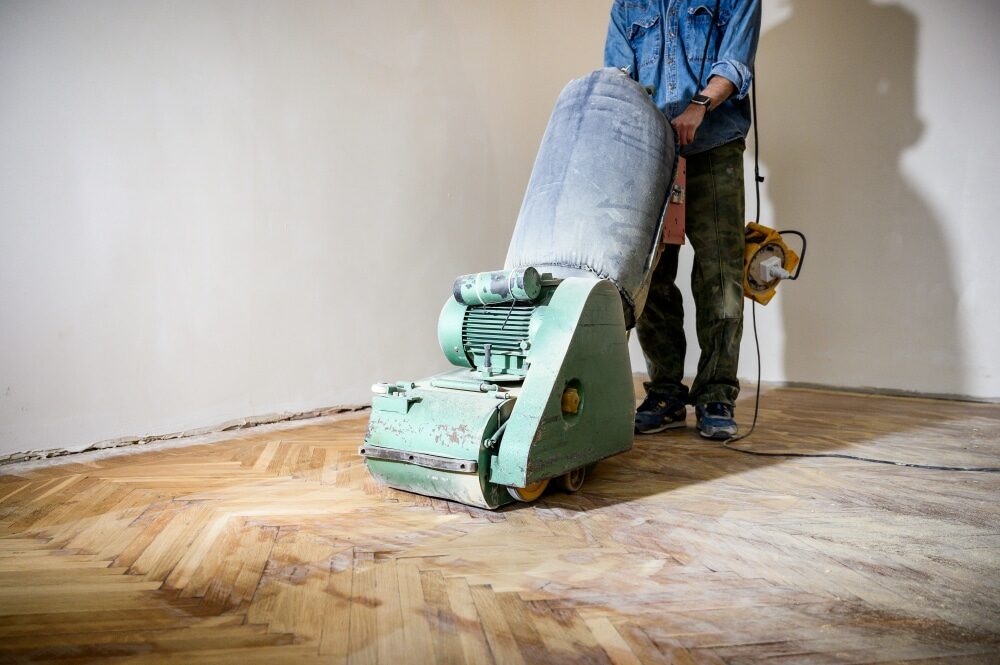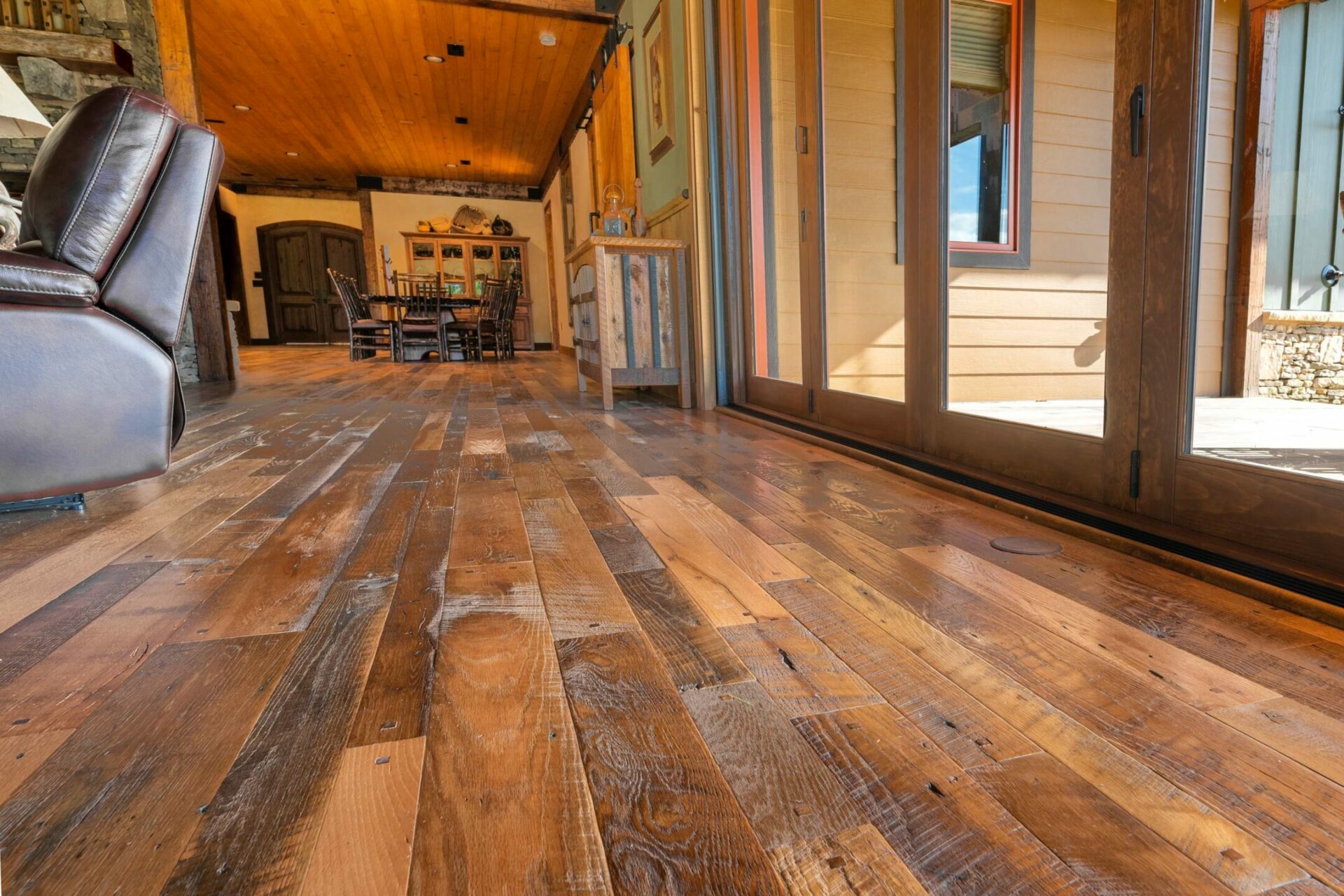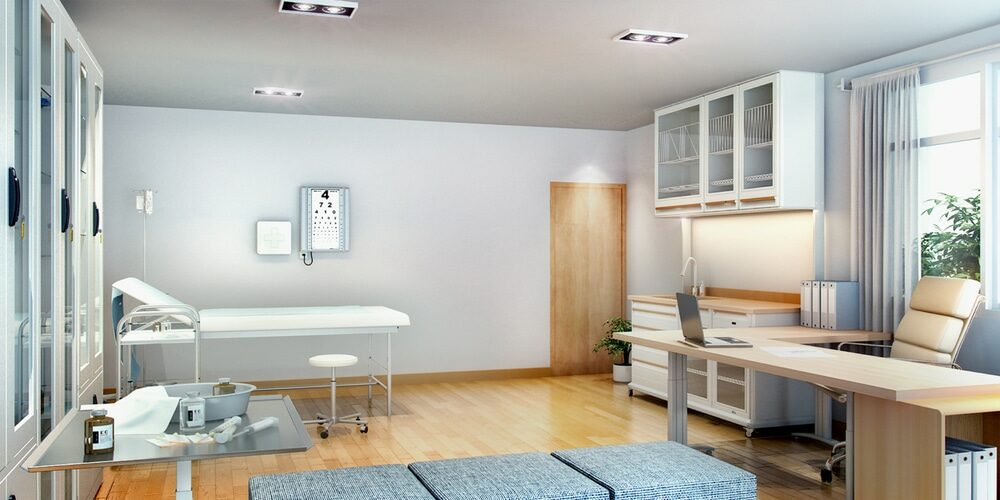London:
Nationwide:
Understanding the Lifespan of Your Deck
Posted on January 10, 2024
Deck Maintenance
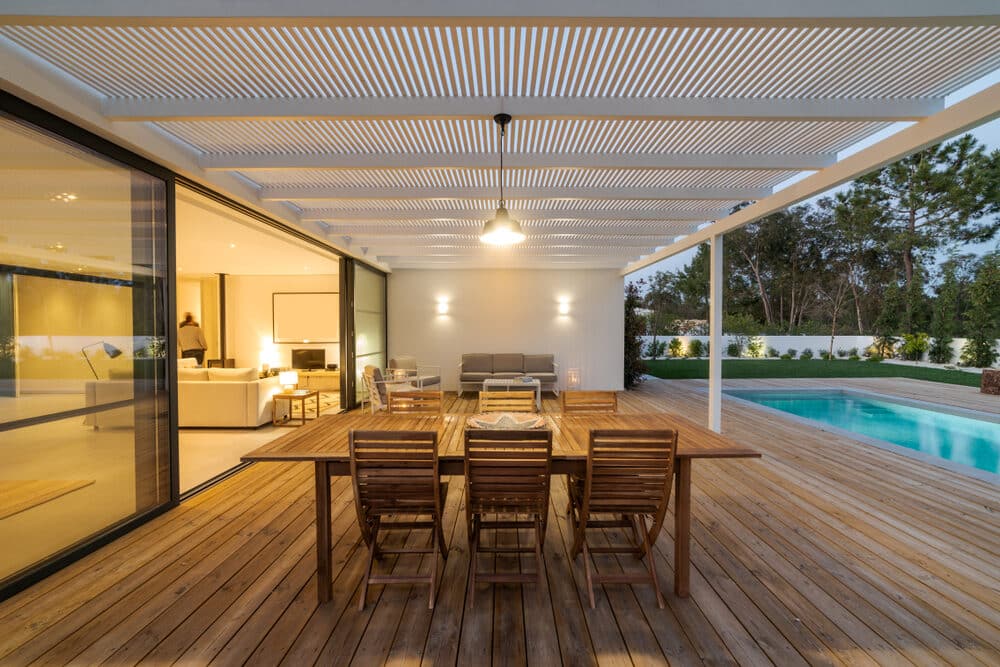
Maximizing Your Deck’s Lifespan: The Ultimate Guide
A deck is more than just an extension of your home; it’s a haven for outdoor gatherings, a retreat for leisurely afternoons, and a valuable asset to your property. However, like any significant investment, a deck requires understanding and care to maintain its condition and extend its lifespan. In this post, we delve into what it takes to preserve the life and beauty of your deck.
We begin by exploring the various materials used in deck construction, from classic wood to modern composite options, each with their own unique attributes and maintenance needs. Understanding these materials is crucial to anticipating the care and longevity of your deck.
But a deck’s life isn’t solely dictated by its material composition. Environmental factors, usage patterns, and the quality of the initial construction all play pivotal roles in how your deck ages. We’ll examine these factors closely, equipping you with the knowledge to recognise early signs of wear and understand how to mitigate them.
Maintenance of your deck isn’t just about fixing what’s broken; it’s about preventing damage before it happens. This post will provide you with practical tips and seasonal maintenance advice to keep your deck in prime condition. We’ll also tackle the tricky question of when to repair or replace parts of your deck, helping you make informed decisions that balance cost and longevity.
For decks that are showing their age, we’ll explore upgrade and improvement options that can rejuvenate your outdoor space, adding both functionality and aesthetic appeal.
Finally, we’ll touch on the importance of professional assessments and when it’s time to call in experts for help. By the end of this post, you’ll be well-equipped with the knowledge to understand, maintain, and extend the lifespan of your deck, ensuring it remains a cherished part of your home for years to come.
Stay with us as we embark on this journey to ensure the longevity and beauty of your deck!
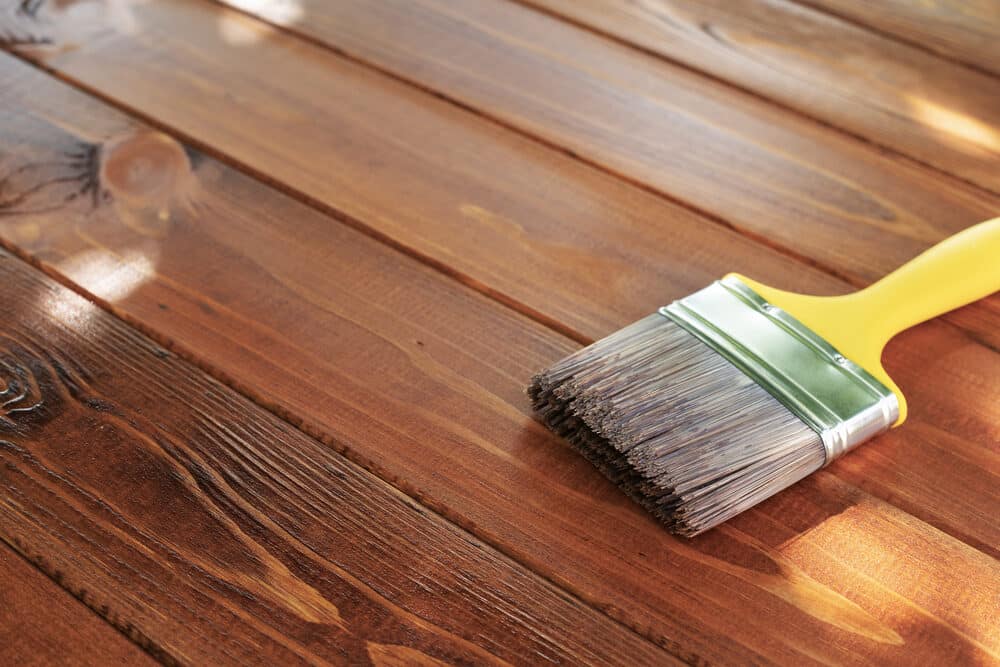
Understanding Deck Materials
Choosing the right material is the first step in ensuring a long and healthy life for your deck. This section will guide you through the most common materials used in deck construction, highlighting their advantages and challenges. By understanding the nature of these materials, you can make an informed decision that aligns with your needs, aesthetic preferences, and maintenance capacity.
1. Wood Decks
- Traditional Wood: Wood decks, often made from cedar, redwood, or pressure-treated pine, offer a classic and natural look. Cedar and redwood are naturally resistant to rot and insects, but they are more expensive. Pressure-treated wood is more affordable and resistant to decay, but it requires regular maintenance.
- Hardwood: Exotic hardwoods like ipe and teak are prized for their durability and unique appearance. They are extremely hard and resistant to rot and insects, but they are also the most expensive option and can be challenging to work with.
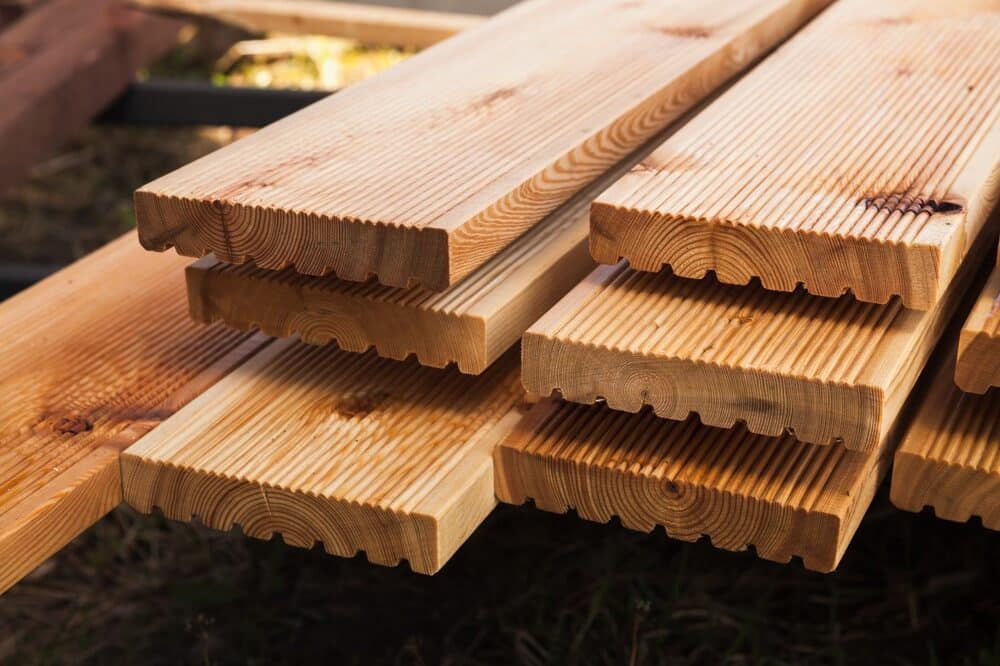
2. Composite Decks
- Composition and Benefits: Composite decking, made from a blend of wood fibres and plastics, offers the look of wood without the same level of maintenance. It’s resistant to rot, insects, and fading.
- Varieties and Considerations: There are various quality levels in composite decking, which can affect its longevity, appearance, and price. Higher-end composites closely mimic the look of natural wood and are more durable.
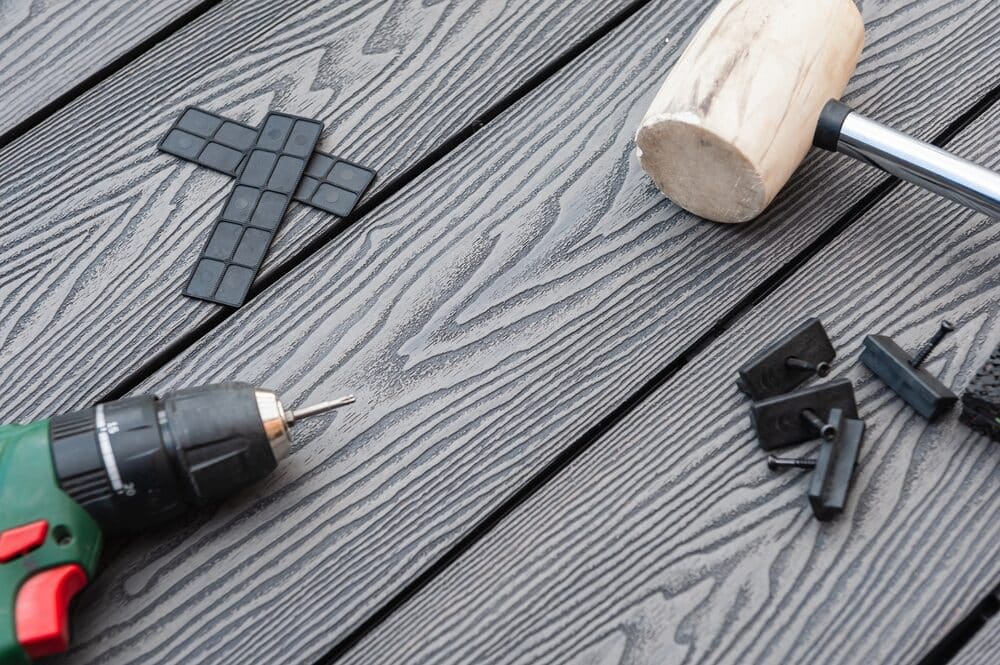
3. Plastic (PVC) decks
- Characteristics: PVC decking is made entirely from synthetic materials, offering the highest resistance to rot, insects, and moisture. It doesn’t warp, crack, or splinter like wood can.
- Aesthetic and Environmental Considerations: While PVC decks require minimal maintenance, they may not have the same natural look as wood and are less environmentally friendly due to their plastic content.
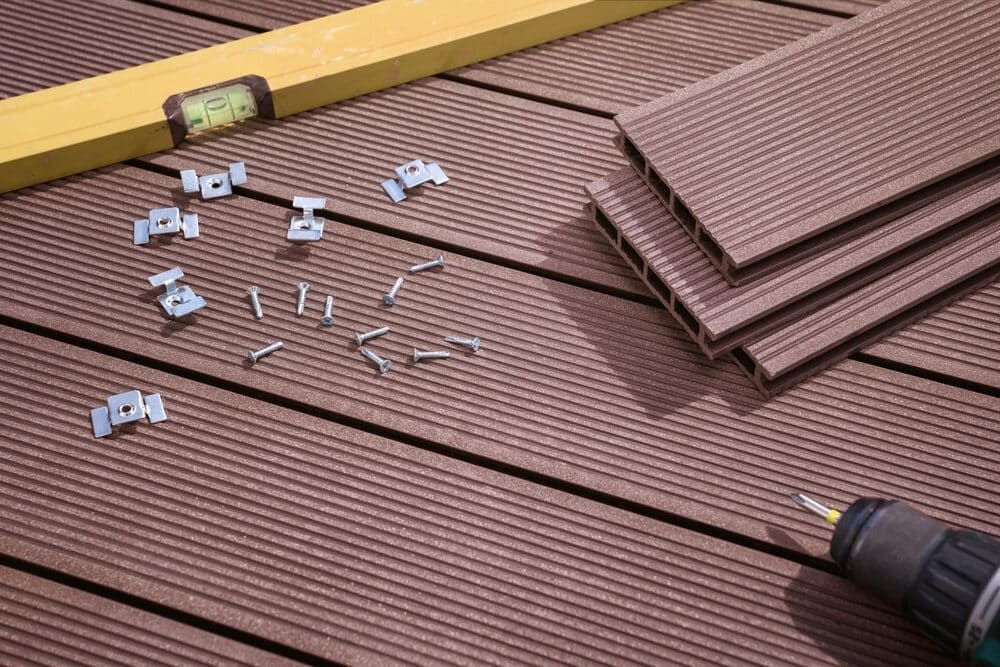
4. Aluminium Decks
- Durability and Maintenance: Aluminium decking is incredibly durable, weather-resistant, and requires little maintenance. It doesn’t rot, rust, warp, or splinter.
- Cost and Usage: Aluminium is a less common choice due to its higher cost and industrial appearance, but it is an excellent option for certain architectural styles and climates.
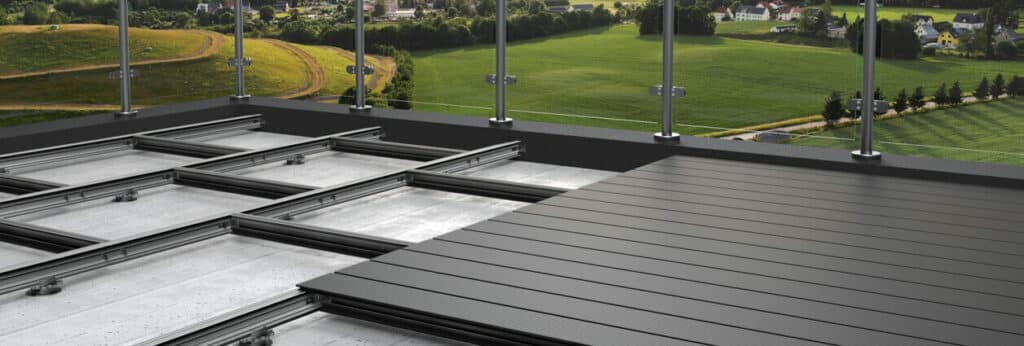
Each material brings a unique set of characteristics to the table. Traditional woods require more maintenance but offer a natural and warm appearance. Composite and PVC options provide ease of maintenance and durability, but at a different cost and with a distinct aesthetic. Aluminium, while less common, provides unmatched durability and a modern look.
Factors Affecting Deck Lifespan
While the choice of material is fundamental in determining the longevity of your deck, several other factors play a crucial role in its lifespan. Understanding these factors can help you take proactive steps to protect your deck and extend its life. Here, we explore the key elements that influence how long your deck can withstand the test of time and nature.
1. Weather and climate conditions
- Moisture and Rain: Decks in areas with high rainfall or humidity are more prone to rot, mould, and mildew, especially wood decks.
- Sun Exposure: Prolonged sun exposure can cause fading, splintering, and warping, particularly in wood and some composite materials.
- Temperature Fluctuations: Extreme temperature changes can lead to the expansion and contraction of deck materials, potentially causing cracks and structural weaknesses.
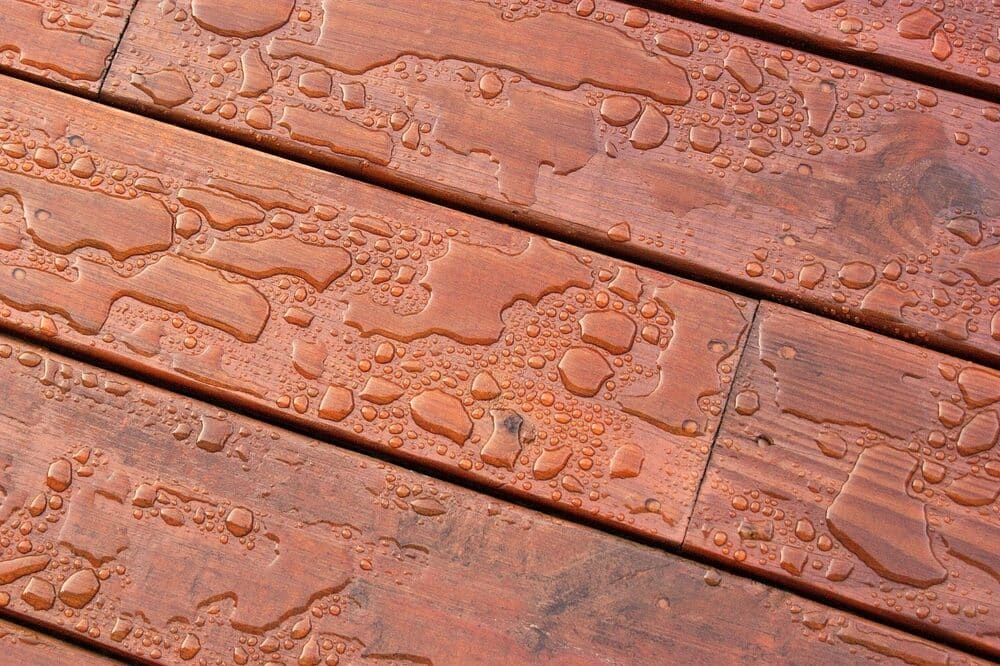
2. Usage and Traffic
- Frequency of Use: Regular use can cause wear and tear over time. High-traffic areas may show signs of ageing faster.
- Weight and Load: The weight of furniture, grills, and the number of people the deck regularly supports can impact its structural integrity.

3. Quality of Construction
- Workmanship: The skill and precision in the deck’s construction, including proper spacing for boards and secure fastening, significantly affect its durability.
- Foundation and Support: A well-built foundation and robust support structure are crucial for the deck’s stability and longevity.
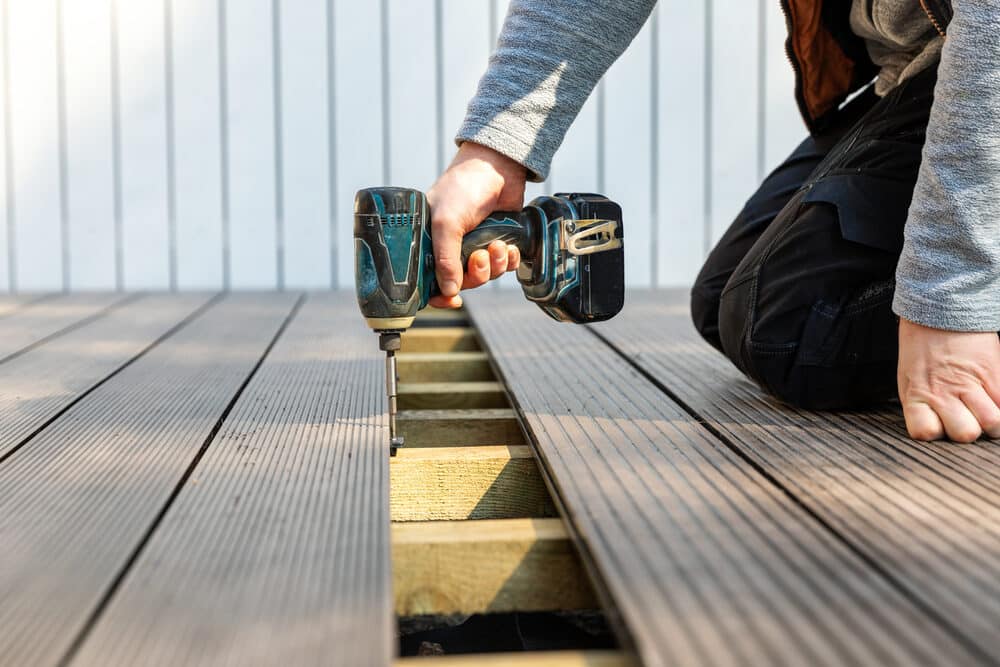
4. Maintenance Practices
- Regular Cleaning: The accumulation of dirt, leaves, and debris can lead to moisture retention and decay, particularly in wood decks.
- Timely Repairs: Addressing small issues like loose boards or railings, cracks, and splinters can prevent them from turning into larger problems.
- Protective Treatments: Periodic staining, sealing, or painting, especially for wood decks, can protect against environmental damage and prolong the deck’s life.
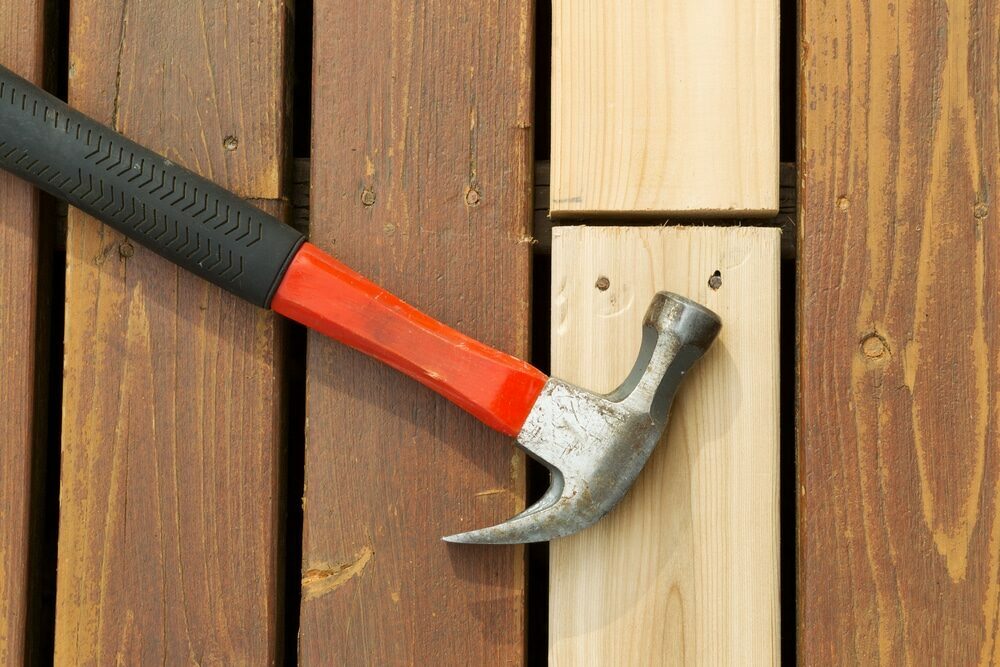
5. Environmental Factors
- Proximity to Water Bodies: Decks near oceans, lakes, or pools may be more susceptible to moisture-related issues and saltwater corrosion.
- Pests and Insects: In some regions, insects like termites or carpenter bees can cause significant damage to wood decks.
6. Material-Specific Considerations
- Natural wood requires more frequent maintenance to prevent rot and insect damage.
- Composite and PVC are less affected by weather and pests but can be sensitive to temperature changes and weight loads.
- Aluminium is highly durable but can be affected by corrosion in certain environments.
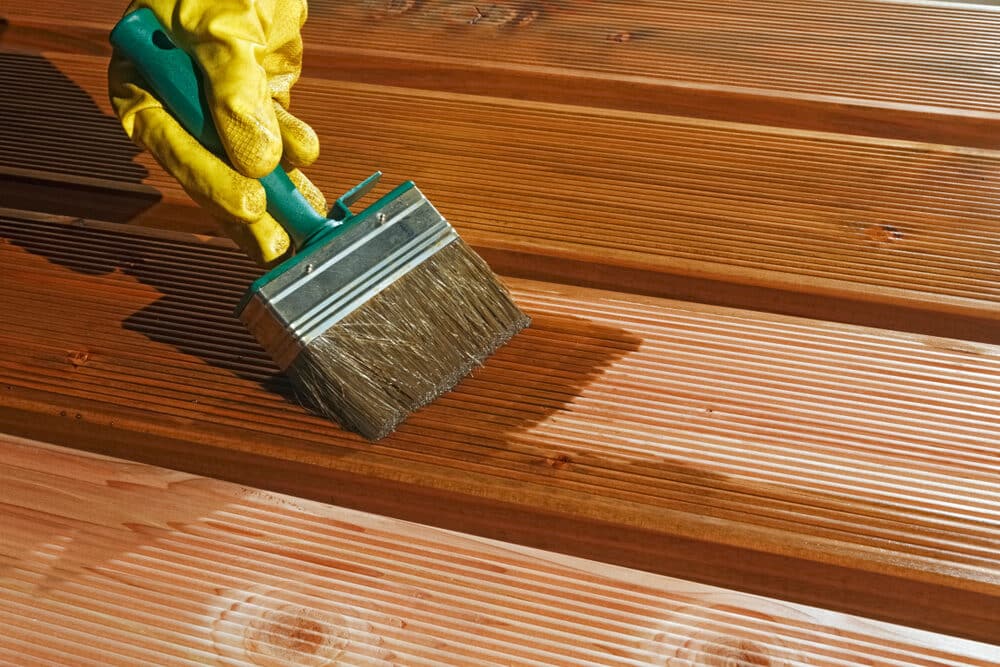
Signs of Ageing in Decks
Recognising the early signs of ageing and wear in your deck is crucial for timely maintenance and repair, which can significantly extend its life. This section identifies common indicators of ageing in decks, helping you to spot potential problems before they escalate into major issues.
1. Visual Wear and Tear
- Fading and Discolouration: Exposure to the sun and elements can cause the deck’s colour to fade or change, especially in wood and some composite materials.
- Splintering and Cracking: Wood decks may show signs of splintering and cracking over time, a clear indication of ageing and exposure to the elements.
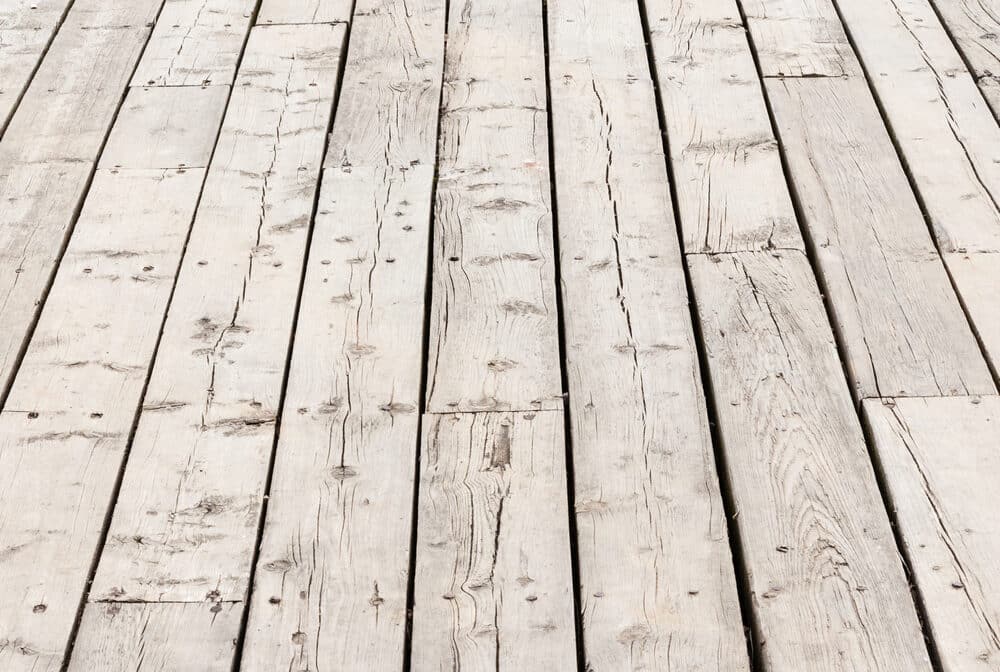
2. Structural Deterioration
- Loose or wobbly railings and boards: These can be signs of weakened connections or rotting wood.
- Sagging or uneven surfaces are indicative of structural issues, possibly due to foundation settling or weakened support joists.
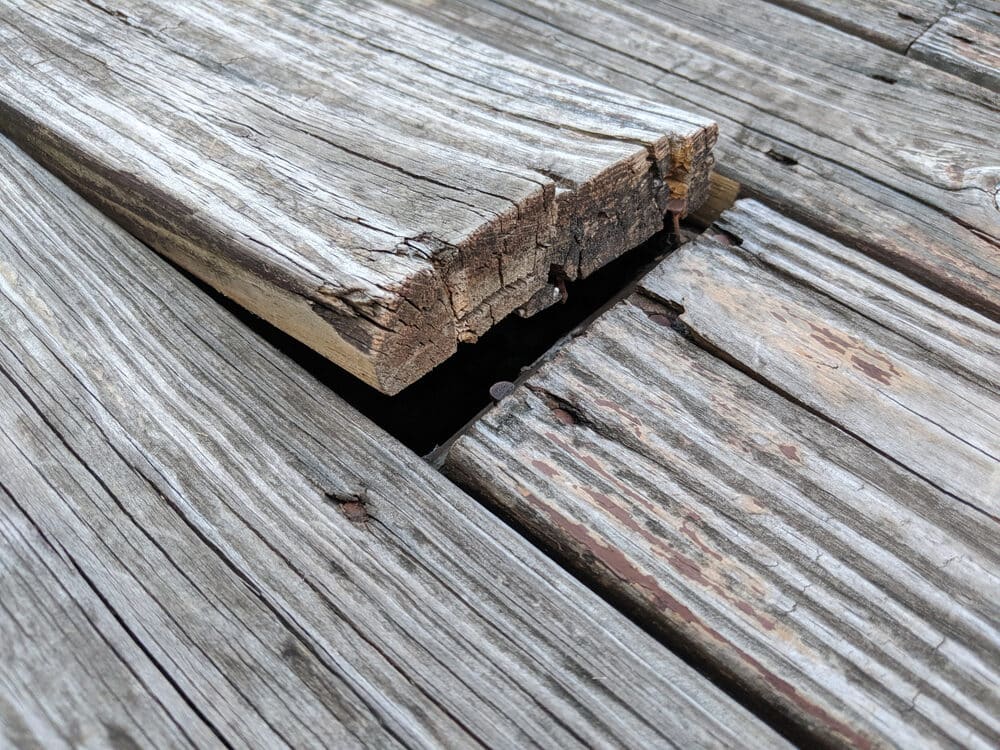
3. Rot and decay
- Soft Spots in Wood: Feeling a soft or spongy texture in wooden decks can indicate rot, a serious issue that needs immediate attention.
- Visible Mould and Mildew: Especially common in damp or shaded areas, mould and mildew can degrade the deck material over time.
4. Pest Infestation
- Holes or Sawdust: Small holes and sawdust can signal an infestation of termites or carpenter bees, particularly in wood decks.
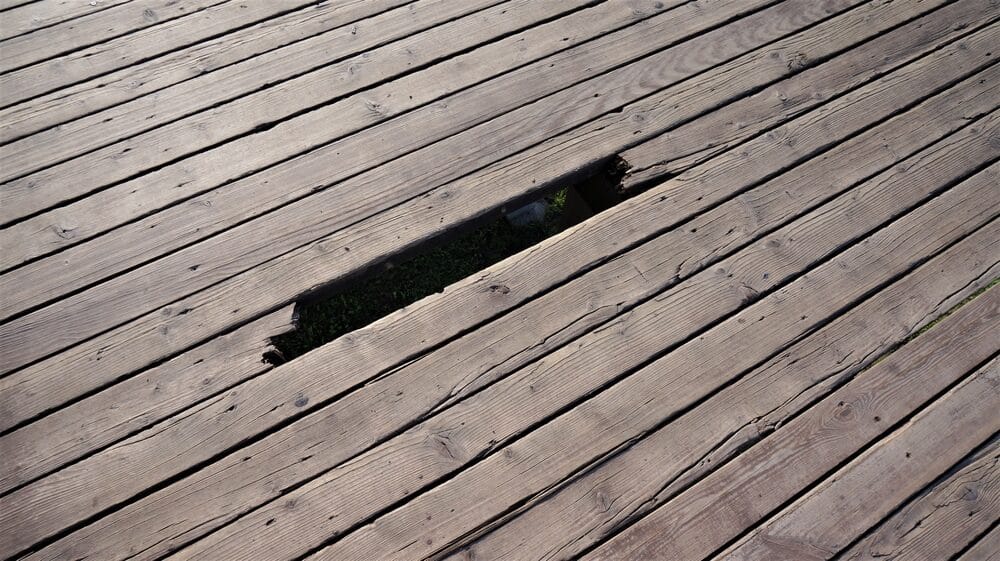
5. Water Damage
- Pooling Water: Areas where water pools and doesn’t drain properly can accelerate rot and decay, especially in wood decks.
- Warped Boards: Boards that have warped or lifted at the edges can be a sign of water damage.
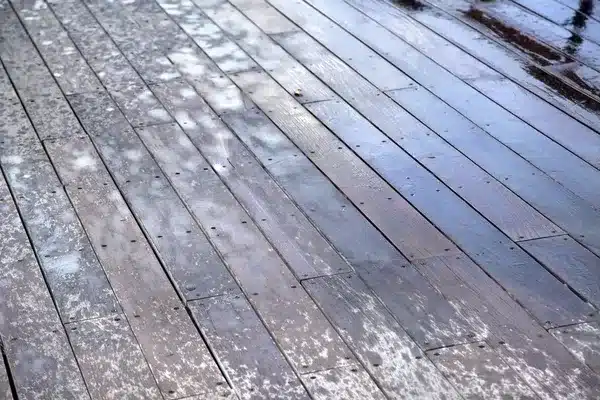
6. Rusting and corrosion
- Rusted Fasteners and Hardware: In metal components of the deck, rusting can weaken structural integrity and indicate potential safety issues.
7. Slippery Surfaces
- Algae or Moss Growth: These can make the deck surface slippery and also contribute to the breakdown of the material, especially in shaded, moist areas.
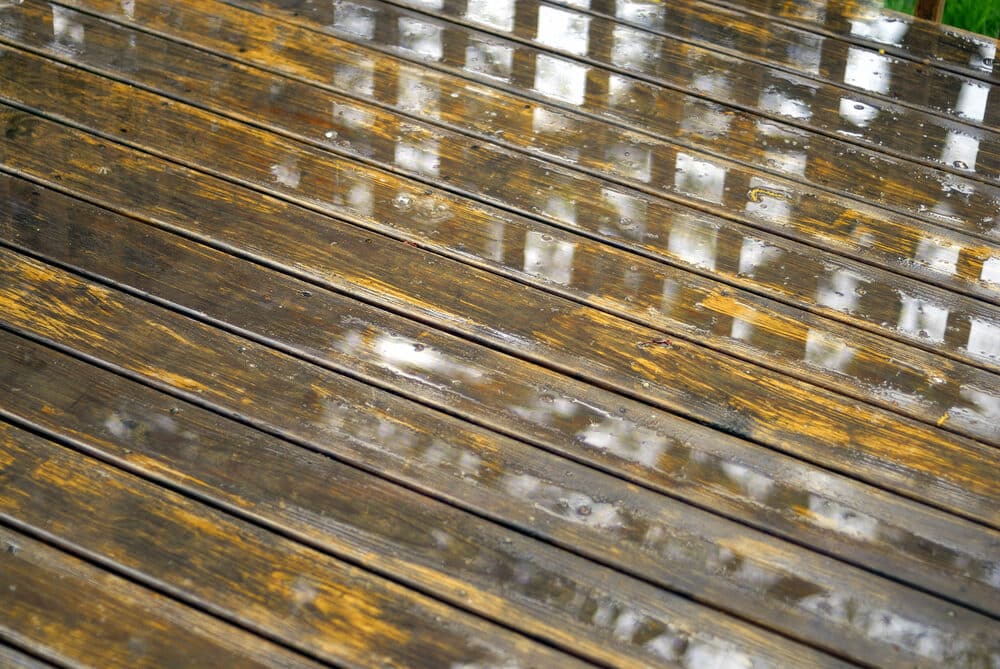
Maintenance Tips to Prolong Your Deck’s Life
Proper maintenance of your deck is key to extending the lifespan of your deck and keeping it safe and beautiful for years to come. This section offers practical tips and best practices for deck maintenance, tailored to different types of materials and common challenges.
1. Regular Cleaning
- Sweep and Wash: Regularly sweep your deck to remove debris. For deeper cleaning, use a mild detergent or a deck cleaner appropriate for your deck material.
- Pressure Washing: For certain materials like wood, a gentle pressure wash can help, but be cautious as high pressure can damage the deck surface.
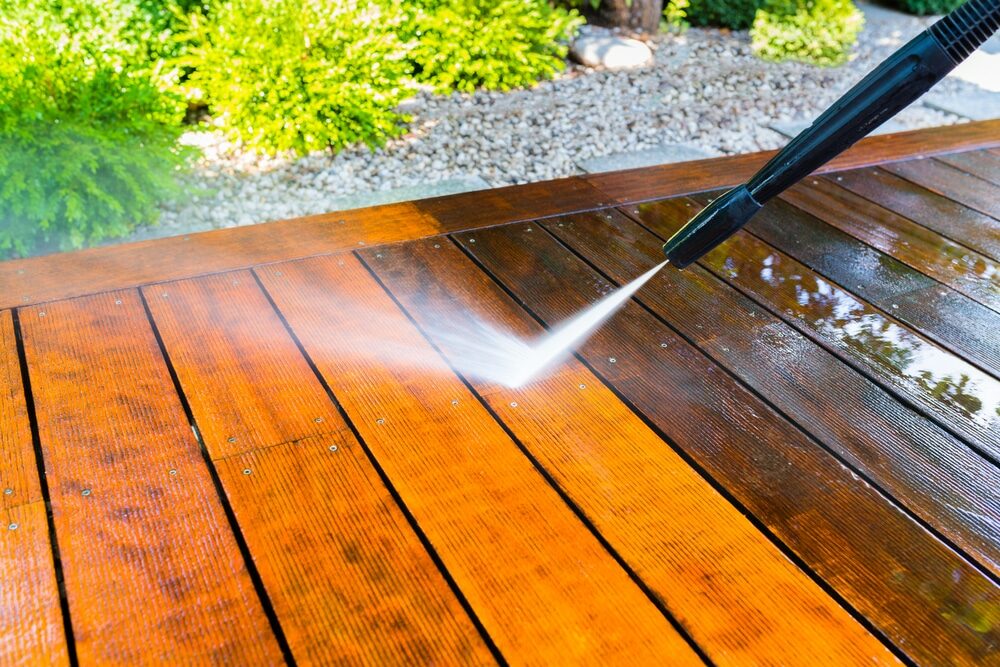
2. Annual Inspections
- Check for Damage: Annually inspect your deck for signs of wear, structural issues, or pest infestation. Pay special attention to areas close to the ground or near water sources.

3. Sealing and staining
- Wood Decks: Apply a sealant or stain every one to three years to protect the wood from moisture, rot, and UV damage. Choose a product suited to the type of wood.
- Composite Decks: Though they typically need less maintenance, some composite decks may benefit from a specialised sealant to prevent staining and fading.
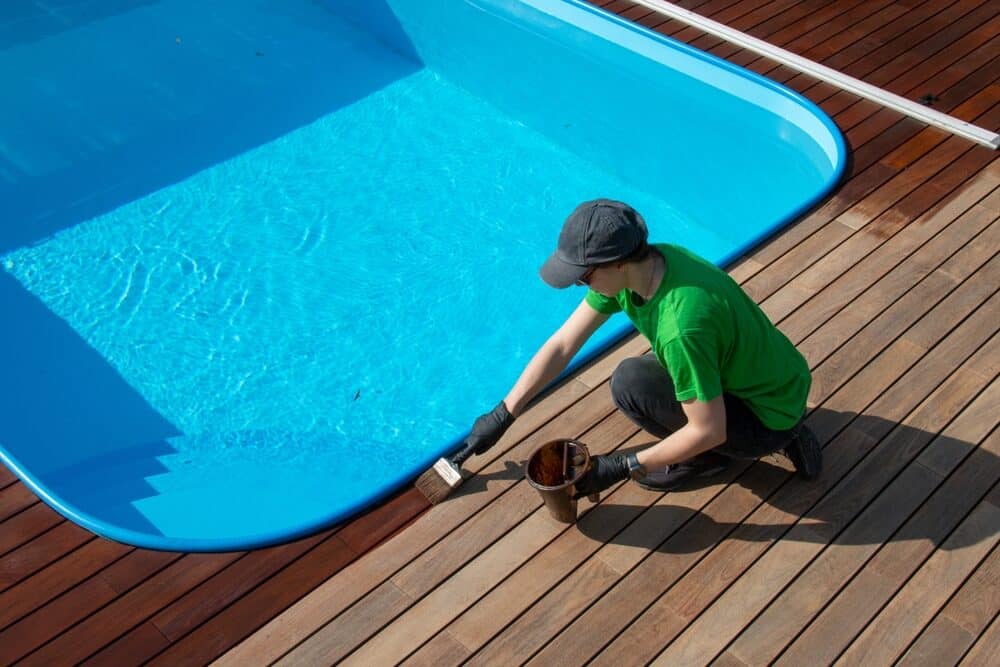
4. Repairing Damages
- Replace Damaged Boards: Address any cracked, warped, or rotten boards promptly to prevent further damage.
- Tighten Loose Fittings: Regularly check and tighten any loose screws, nails, or railings.
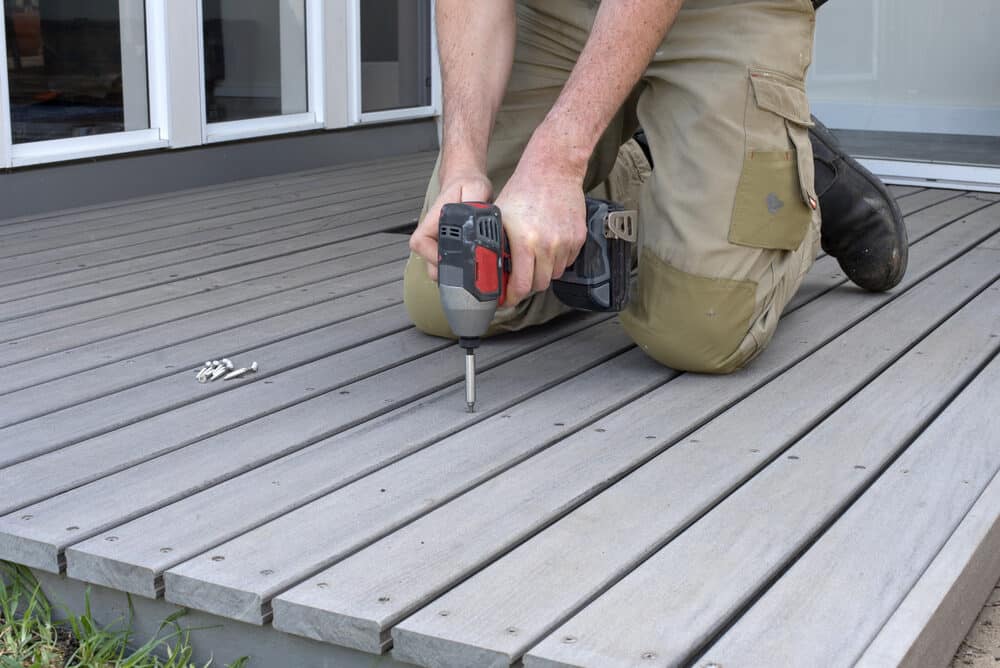
5. Managing Moisture and Drainage
- Ensure Proper Drainage: Make sure your deck has adequate drainage to prevent water accumulation, which can lead to rot and decay, especially on wood decks.
6. Pest Control
- Regular Treatments: If you live in an area prone to termites or other wood-eating pests, consider regular pest control treatments to protect your deck.
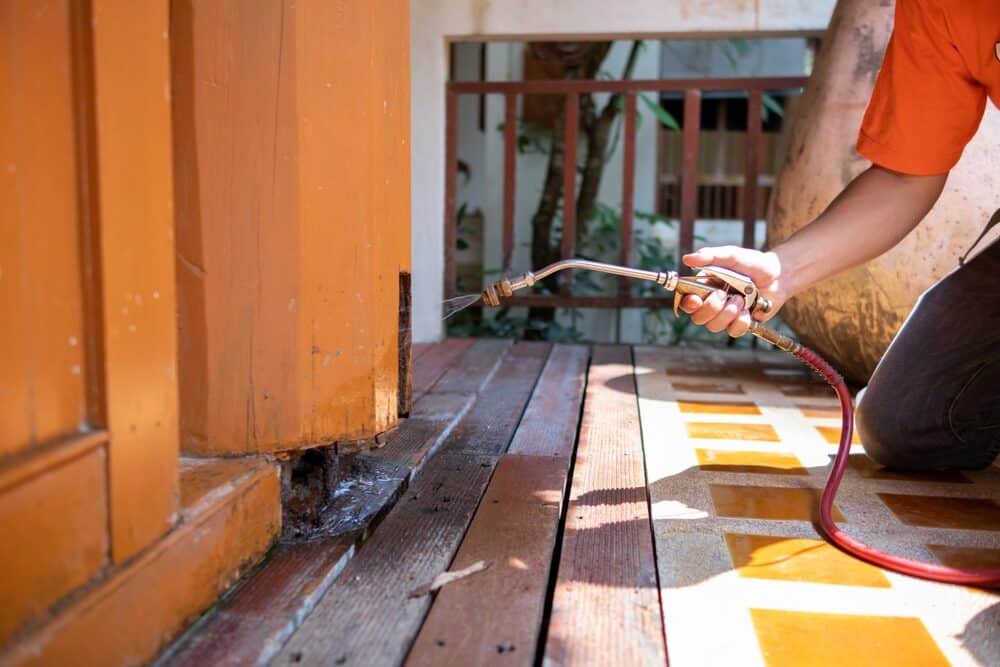
7. Protecting against the Elements
- Use Rugs and Mats Wisely: Outdoor rugs and mats should be breathable to prevent moisture trapping. Make sure to move them periodically to avoid discoloration of the deck.
- Furniture Care: Use furniture pads under deck furniture to prevent scratches and stains.
8. Seasonal Care
- Winter Preparations: In colder climates, clear your deck of snow to prevent moisture retention and potential damage.
- Summer Preparations: In hot climates, consider installing shades or awnings to protect the deck from excessive sun exposure.

Repair or Replace: Making the Right Decision
Knowing whether to repair or replace parts of your deck is a critical decision that can affect both the safety and the financial value of your home. This section will guide you through evaluating the condition of your deck and making the best choice between repairing and replacing it.
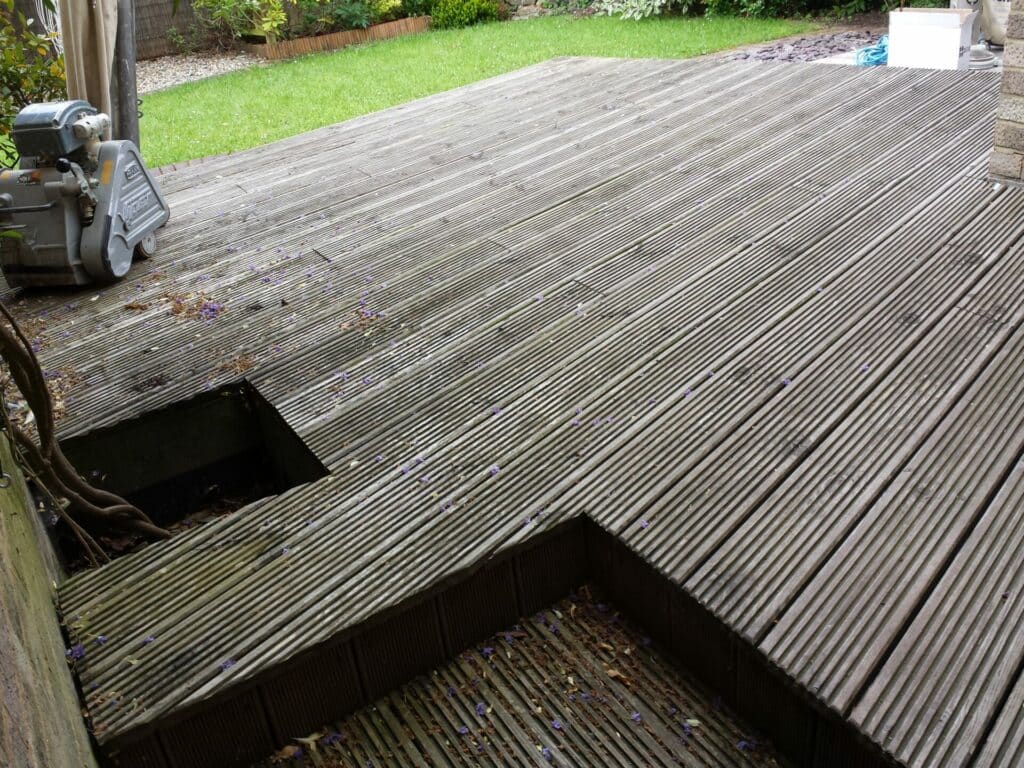
1. Assessing the Extent of Damage
- Conduct a Thorough Inspection: Look for signs of serious structural damage, such as major cracks, rot, or instability in the supports and foundation.
- Consult a professional: If you’re unsure about the severity of the damage, it’s wise to get a professional assessment. They can provide a more accurate understanding of the deck’s condition.

2. Cost-Benefit Analysis
- Cost of Repairs vs. Replacement: Compare the cost of necessary repairs to the cost of a full replacement. In some cases, the cumulative cost of extensive repairs might approach or exceed the cost of building a new deck.
- Long-Term Value: Consider the long-term value and lifespan of repairs versus replacement. While repairs might be cheaper in the short term, replacements could be more cost-effective in the long run.

3. Age and Expected Lifespan of the Deck
- Consider the deck’s age: If your deck is nearing the end of its expected lifespan, investing in a new deck might be more practical than repairing an old one.
- Material Lifespan: Different materials have varying lifespans. For instance, wood decks typically last around 15-20 years, while composite decks can last 25–30 years or more.
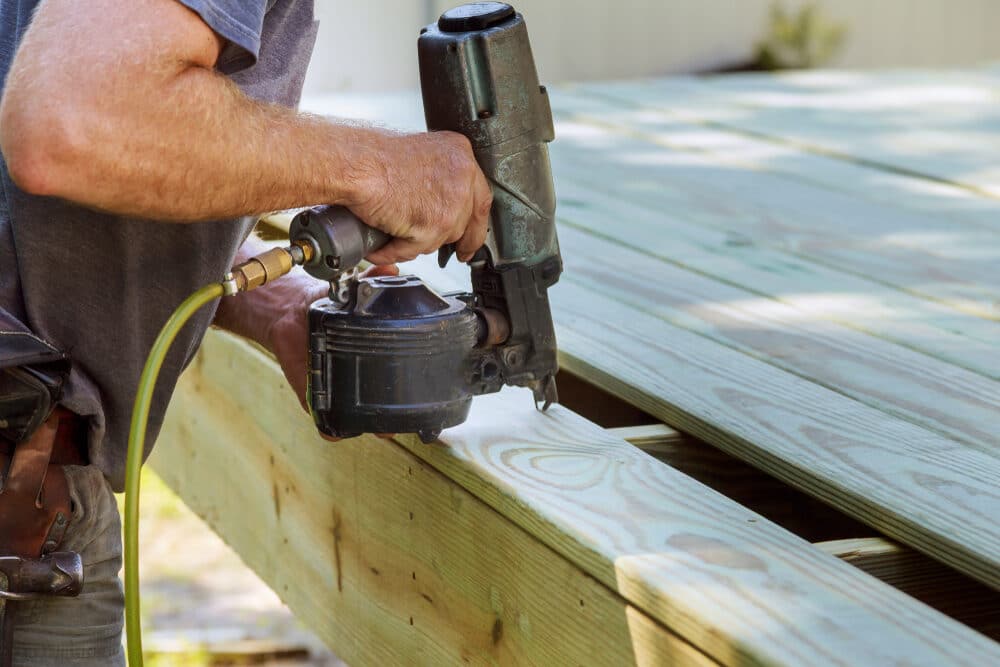
4. Safety Concerns
- Structural Integrity: If the structural integrity of the deck is compromised, replacement is often the safer option.
- Compliance with Building Codes: Ensure that any repairs or replacements comply with current building codes. Older decks may not meet current standards.
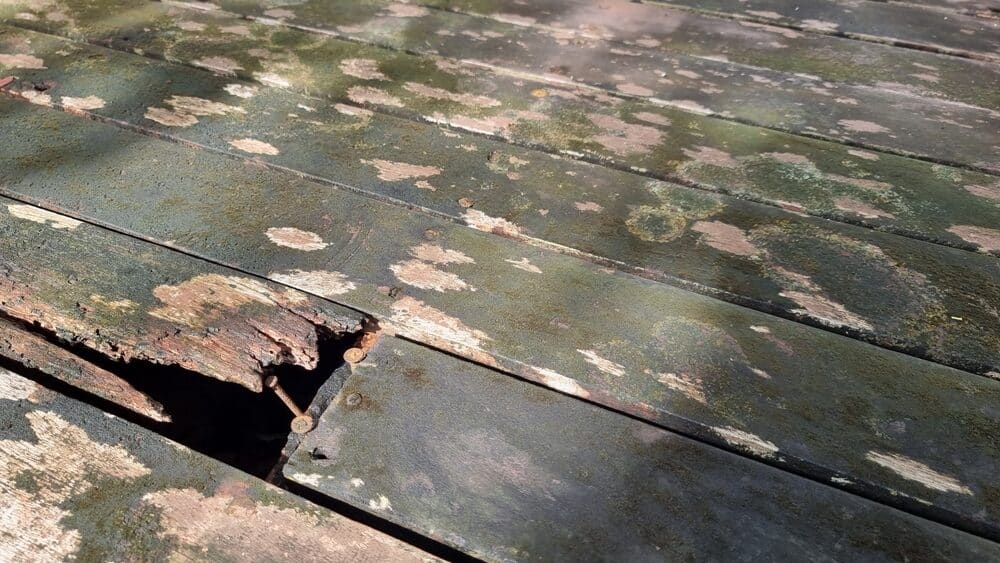
5. Aesthetics and upgrades
- Match Existing Materials: When repairing, consider whether you can closely match new materials with the existing ones for a consistent look.
- Upgrade Opportunities: Replacing your deck can offer the chance to redesign or upgrade to more durable, low-maintenance materials.
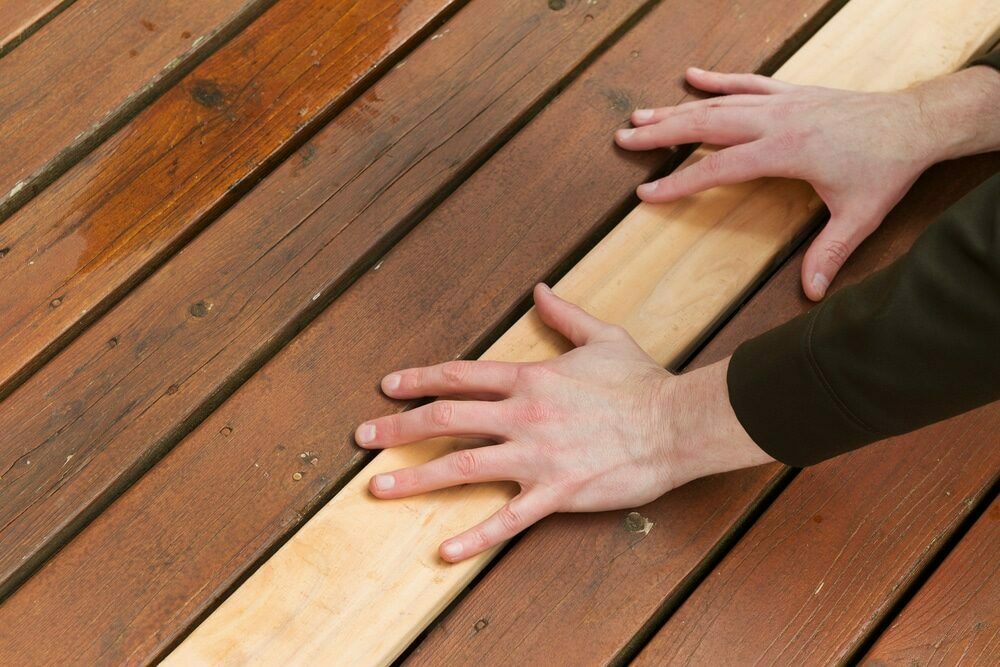
6. Environmental Impact
- Sustainability Considerations: Weigh the environmental impact of repair versus replacement, including the sustainability of materials used and the disposal of old materials.
Upgrades and Improvements for Ageing Decks
Revitalising an ageing deck not only extends its lifespan but can also enhance its functionality and aesthetic appeal. This section explores various upgrade and improvement options for older decks, whether you’re looking to refurbish, modernise, or add new features.
1. Refinishing and resurfacing
- Staining and Sealing: Applying a fresh coat of stain and sealant can rejuvenate the look of a wooden deck and protect it from the elements.
- Resurfacing with New Decking Boards: For decks with a solid structure but worn-out surfaces, replacing the decking boards can be a cost-effective way to give them a new lease on life.
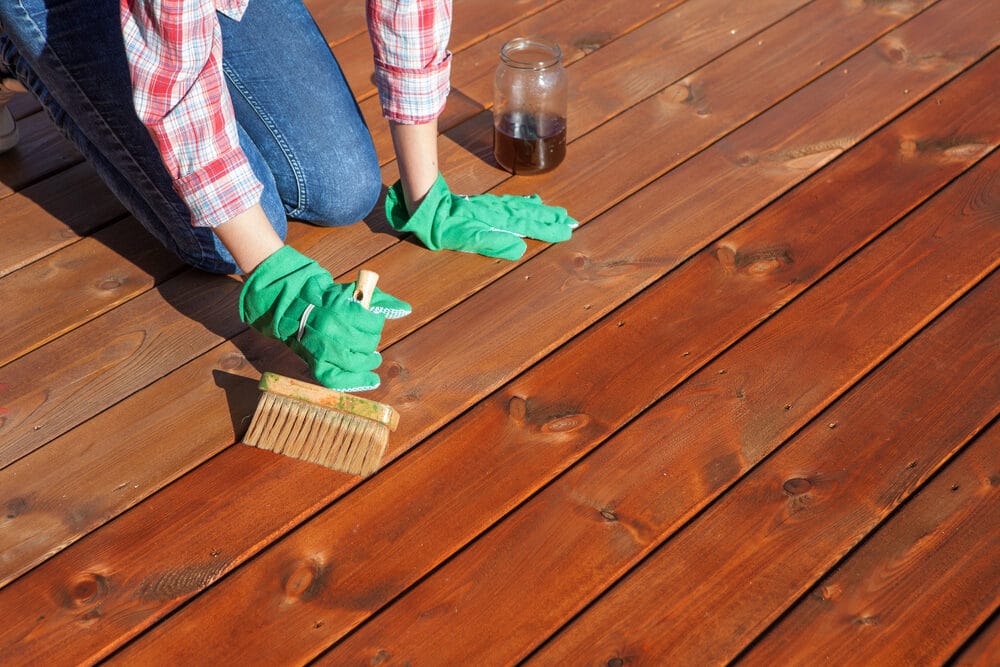
2. Upgrading deck materials
- Switch to Low-Maintenance Materials: Consider replacing wood boards with composite or PVC decking for reduced maintenance and increased durability.
- Aluminium Railings: Replacing wooden railings with aluminium can provide a modern look and enhanced durability.
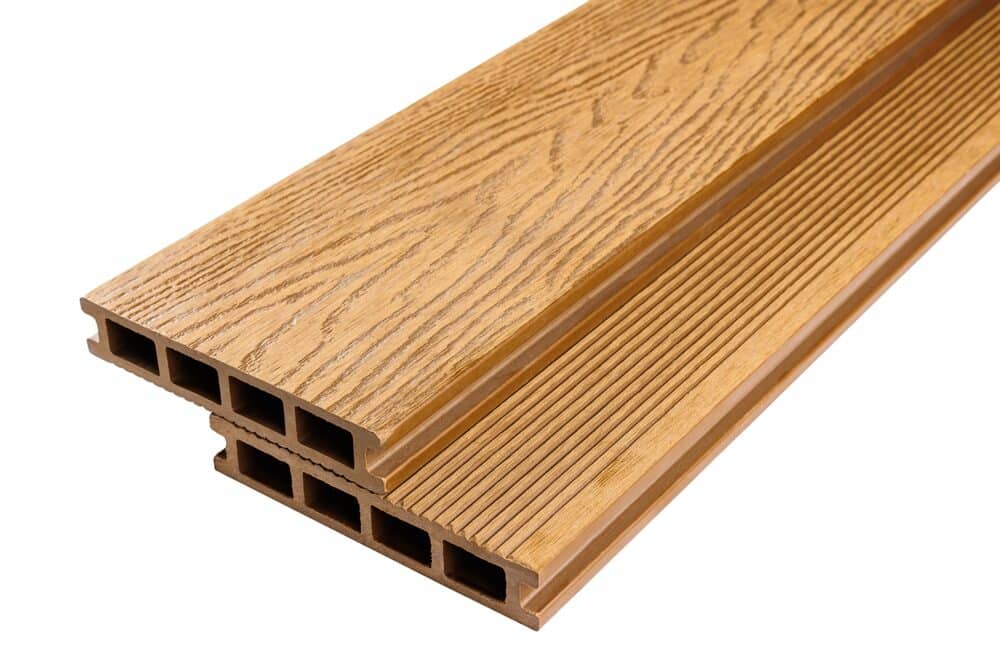
3. Adding or Improving Railings and Stairs
- Safety and Style: Updating railings and stairs can significantly improve the safety and appearance of your deck. New designs and materials can complement the style of your home.
- Glass or Cable Railings: For a contemporary look and an unobstructed view, consider glass or cable railings.
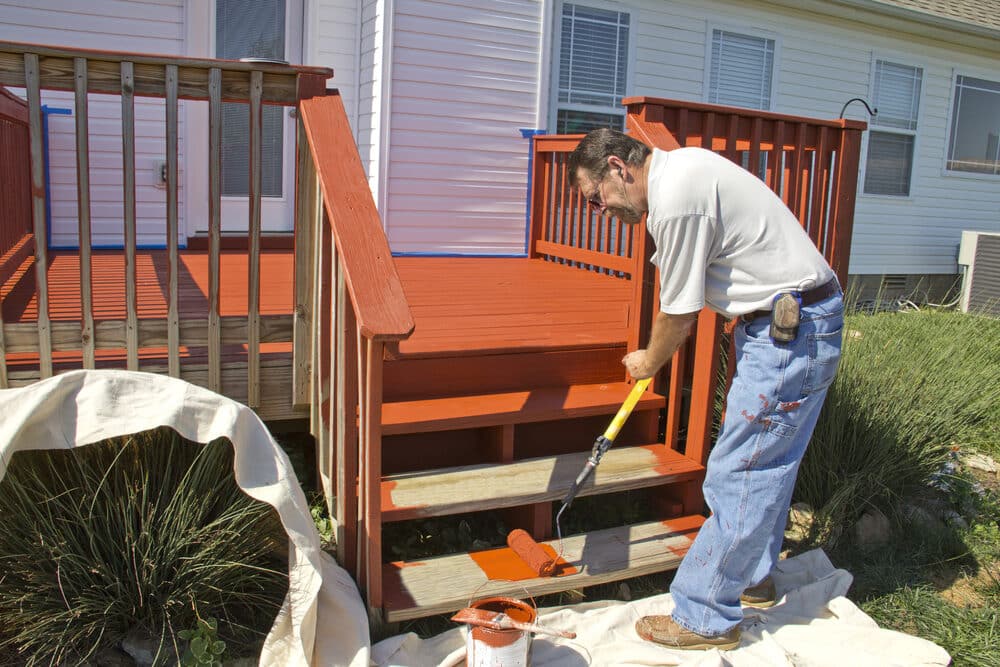
4. Incorporating Lighting
- Adding Deck Lights: Installing LED deck lights can create a warm ambiance and improve safety by illuminating steps and edges.
- Solar Lighting Options: Solar lights are an eco-friendly option that can be easily installed without wiring.
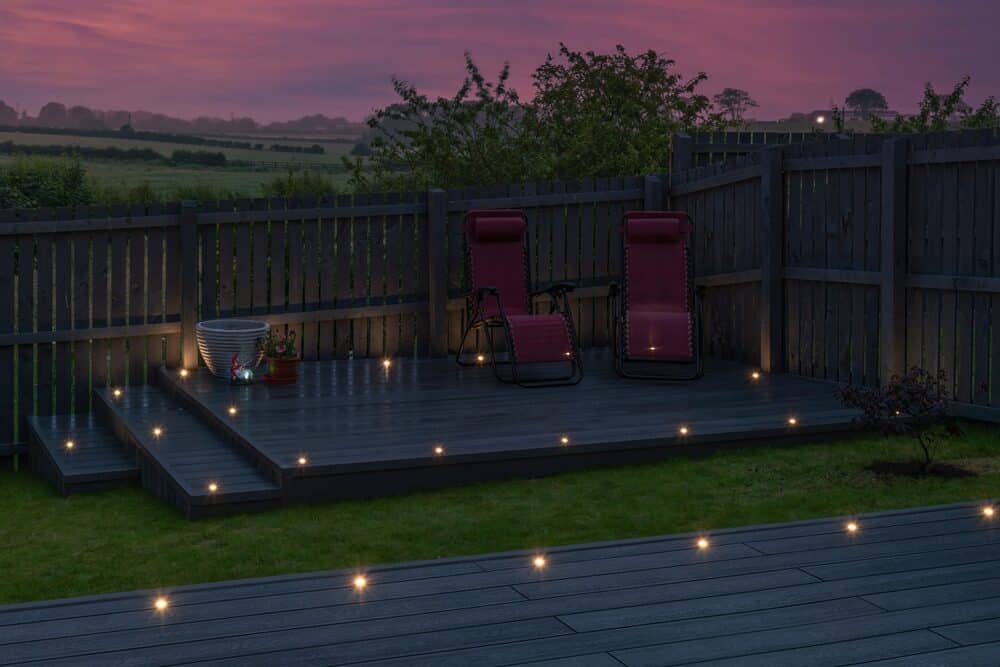
5. Building a Pergola or Gazebo
- Shade and Aesthetic Appeal: A pergola or gazebo can provide shade, define the space, and add a charming focal point to your deck.
6. Expanding or redesigning the deck
- Additional Space: If space permits, consider expanding your deck to accommodate more seating or dining areas.
- New Layouts: Redesigning the layout can optimise the space and functionality, like adding built-in seating or planters.
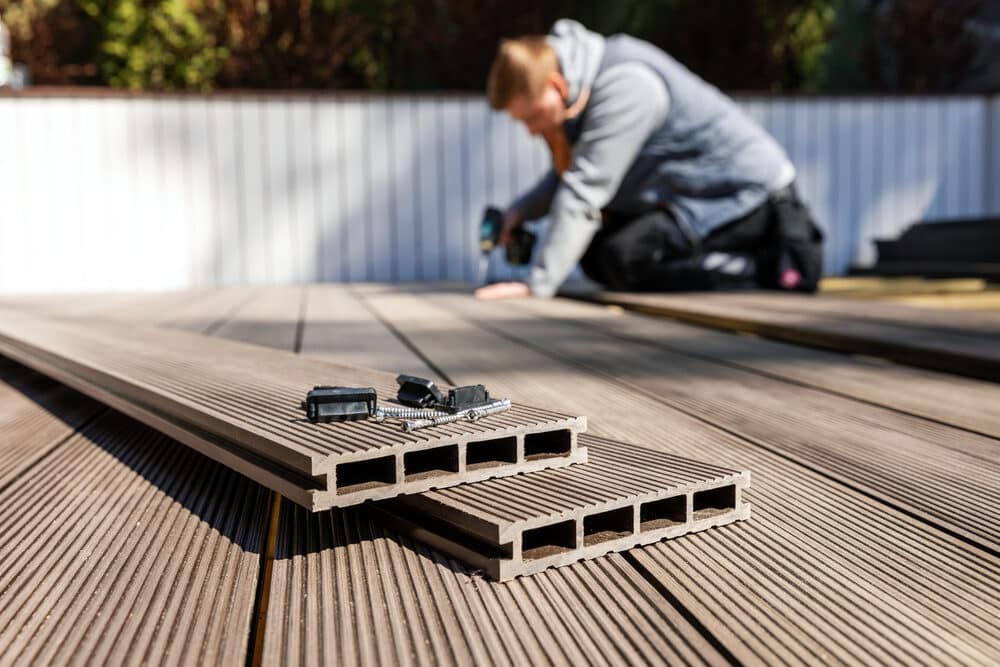
7. Incorporating smart home features
- Smart Lighting and Sound Systems: Integrate smart outdoor lighting and sound systems for convenience and enhanced entertainment options.
8. Eco-Friendly Upgrades
- Sustainable Materials: Use eco-friendly materials and practices in your upgrades to minimise environmental impact.
- Rainwater Collection Systems: Installing rain barrels or a rainwater collection system can be an efficient way to utilise natural resources for garden watering.
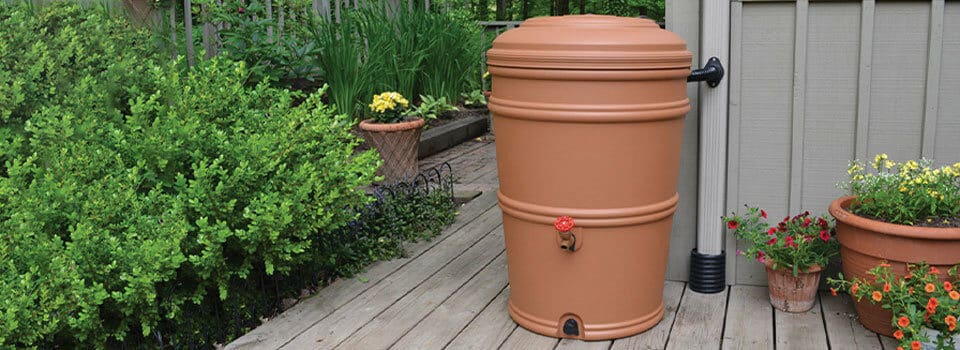
Professional assessment and care
While regular maintenance of your wood deck can be managed by most homeowners, there are situations where the expertise of a professional is invaluable. This section highlights the importance of professional assessments and care for your deck, detailing when and why to seek expert assistance.
1. Benefits of Professional Assessment
- Expert Evaluation: A professional can thoroughly assess the condition of your deck, identifying issues that may not be visible to the untrained eye.
- Safety Inspections: Professionals can ensure that your deck meets all safety standards and building codes, which is crucial for preventing accidents.
2. When to Call in a Professional
- Significant Structural Damage: If you suspect serious structural issues, a professional can determine the extent of the damage and the best course of action.
- Major Repairs or Replacements: For large-scale repairs or when considering a full deck replacement, a professional can provide guidance on materials, design, and construction.
- Complex Upgrades: If you’re planning complex upgrades, such as adding new features or significantly altering the layout, a professional’s input can be vital.
3. Choosing the Right Professional
- Credentials and Experience: Look for licenced, insured contractors with experience in deck construction and repair.
- References and Reviews: Check references and online reviews to gauge the quality of their work and customer satisfaction.
4. Professional maintenance services
- Regular Maintenance Contracts: Some professionals offer regular maintenance services, ensuring that your deck is consistently cared for throughout the year.
- Specialised Treatments: Certain treatments, like deep cleaning, structural reinforcements, or specialised coatings, are best handled by experts.
5. Cost Considerations
- Cost vs. Value: While hiring a professional can be more costly than DIY, the value of their expertise in ensuring the safety and longevity of your deck can be a worthwhile investment.
- Get Multiple Estimates: When planning major work, get estimates from several professionals to compare prices and services.
6. Documentation and Permits
- Building Permits: A professional can help navigate the process of obtaining any necessary building permits for deck repairs or alterations.
- Record-keeping: Keeping detailed records of professional assessments and work done can be beneficial for future reference and can add value if you decide to sell your home.
Engaging a professional for deck assessment and care can provide peace of mind, ensuring that your deck not only looks great but is structurally sound and safe. In the next section, we will conclude our comprehensive guide on understanding and maintaining the lifespan of your deck.
Conclusion
Throughout this comprehensive guide, we have explored the various aspects of understanding and maintaining the lifespan of your deck. From the initial choice of materials to recognising signs of ageing and executing effective maintenance strategies, each element plays a vital role in ensuring that your deck remains a safe, enjoyable, and aesthetically pleasing extension of your home.
1. Key Takeaways
- Material Matters: The choice of decking material significantly influences its longevity and maintenance requirements.
- Proactive Maintenance: Regular cleaning, timely repairs, and protective treatments are essential for prolonging the life of your deck.
- Early Detection: Identifying and addressing signs of ageing early can prevent more significant and costly problems down the road.
- Professional Insight: When in doubt or facing major repairs or upgrades, the expertise of a professional can be invaluable.
2. Long-Term Benefits
- A well-maintained deck not only enhances the beauty and functionality of your outdoor space but also adds value to your property.
- By investing time and effort into proper care, you extend the life of your deck, making the most of this significant investment.
3. Final Thoughts
- Your deck is more than just a structure; it’s a backdrop for memories, a retreat for relaxation, and a reflection of your home’s character. Treating it with care and attention ensures it will continue to serve and delight you for years to come.
We hope this guide has provided you with valuable insights and practical tips for understanding and caring for your deck. Whether you’re in the process of building a new deck or maintaining an existing one, remember that your efforts today will shape the enjoyment and functionality of your outdoor space in the future.

Sanding
We provide virtually dust-free sanding with our continuous belt machinery with mobile extraction units, giving you a safer environment for your family.
Oiling
This organic finish not only adds beauty to your home but also has exceptional water-repellent characteristics, making it easier to clean and maintain.
Waxing
This natural floor finish offers the softest and most mellow appearance – and leaves your floor able to breath.
Buffing
Using soft buffing machines (and hand-polishing where required) will bring a wonderful sheen to your newly-finished floor.
Repairs
We offer a full assessment of your wooden floors to determine what repairs are needed to provide the perfect working surface for the later stages of sanding, staining and sealing.
Restoration
We offer a comprehensive restoration process designed to address floors that are improperly fitted or damaged over time through wear and tear.
Request a fixed price quote for your wood floor restoration now
Simply enter your postcode below to get started.
Services
Wood Floor Sanding Wood Floor Restoration Wood Floor Scratch Repair Squeaky Wood Floor Repair Parquet Floor Sanding Parquet Floor Restoration Commercial Floor Sanding Church Floor Sanding Community Centre Floor Sanding School Floor Sanding Gap Filling Gap Filling with ResinCopyright © Mr Sander®
Privacy & Cookies Terms & Conditions Complaints Procedure Cancellation Rights Sitemap